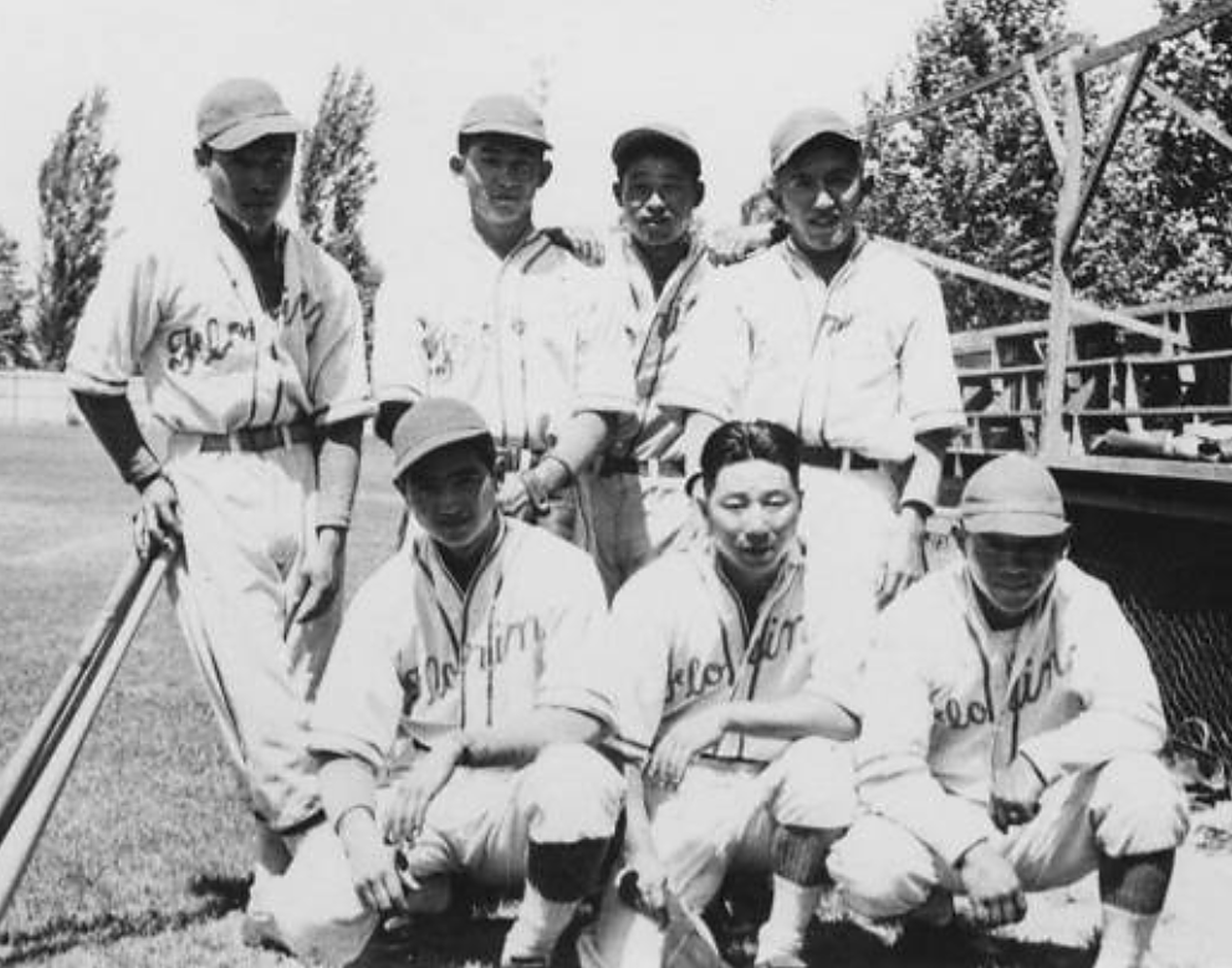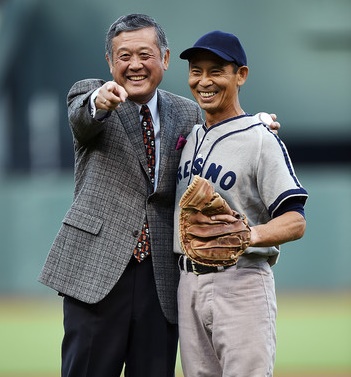
Legacy
The story of Japanese American players, coaches, teams, and leagues has very nearly been a lost chapter in American and baseball history. Only today is it being rediscovered, to the benefit of America, baseball, and Japanese Americans alike.
A principal reason for this rediscovery is the traveling exhibition Diamonds in the Rough, which tells the story of Japanese Americans in baseball through words, images, and memorabilia. The exhibition, opened in Fresno, California, in 1996 and has since been viewed in cities and towns across the nation as well as at the National Baseball Hall of Fame and Museum in Cooperstown. Also in the 1990s, a number of major-league teams, as well as the Hall of Fame, have given belated recognition to surviving Japanese American players of pre-World War II days. Now in their eighties and nineties, these venerable heroes once again stand in the limelight and hear the cheers of baseball fans.
Their story, and the story of their ancestors and descendants, is a tale of a great journey, full of hard-won victories, devastating setbacks, and new triumphs. The travelers on this journey are known by names designating the generations of Japanese immigrants and their descendants:
- Issei – first-generation Japanese immigrants
- Nisei – second-generation Japanese Americans
- Sansei – third-generation Japanese Americans
- Yonsei – fourth-generation Japanese Americans
- Nikkei – Japanese Americans of all generations
So much of their story is wrapped up in baseball. If we were to dissect a Nikkei baseball, we would find that the center epitomizes the core members of the Issei and Nisei generations, the pioneers who created a culture.
The fiber and strings would represent the communities, weaving their identities, loyalties, and cultural affinities around their teams and players.
The leather skin would symbolize the physical and mental toughness developed by the Issei and Nisei who endured the travails of settlement in a new land and the eviction and internment of World War II.
The stitching bonds the Issei, Nisei, Sansei, and Yonsei together and seals these family spirits for future generations.
Today this symbolic baseball is being passed on to new generations. It carries with it history, wisdom, and pride of their ancestors. May they cherish this unique memento and embellish it with their own skills, discipline, courage, determination, and sportsmanship, on and off the baseball diamond. May they carry on the one-hundred-year legacy of Japanese Americans-working hard, keeping faith-and playing ball.
Kerry Yo Nakagawa is the author of Through a Diamond: 100 Years of Japanese American Baseball. He is also the founder and director for the non-profit Nisei Baseball Research Project (NBRP), curator of the Diamonds in the Rough: Japanese Americans in Baseball exhibition which was displayed at the National Museum in the summer of 2000, a consultant to the prestigious Baseball Hall of Fame tour entitled Baseball in America, and an independent producer/filmmaker, actor, researcher, and writer.
